Christine Nishiyama is an artist, writer and the founder of Might Could Studios. Outside of being one of Skillshare’s Top Teachers, Christine helps creatives explore their art, gain confidence and discover their unique style through courses, books and weekly articles. Over 40,000 artists tune in to her weekly newsletter to get their dose of artistic inspiration.
What had you decide to put so much work into helping other creatives?
I actually got into helping other creatives by accident. I was approached by Skillshare and asked to teach a course on their platform. At first I laughed and thought, “Who am I to teach a course—I’m not an expert!” But I decided to give it a go anyways, to just see what would happen. And now, here I am 6 years later, still writing and teaching about creativity and art-making!
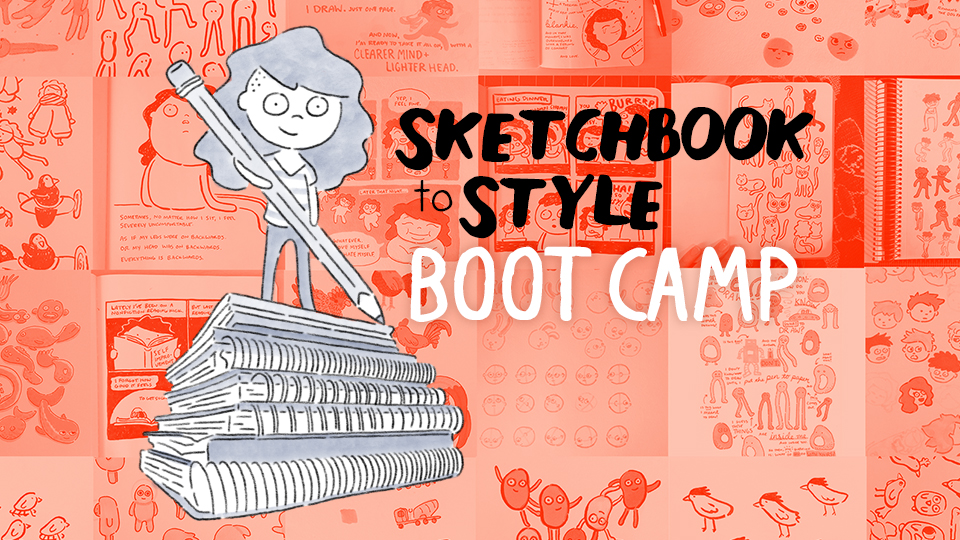
Initially I taught basic tutorial courses, but as I explored and experimented more, I realized the things that interest me most are the deeper aspects of creativity and art. I also found a love of writing, and enjoyed using essays to tackle big questions like “what is art” or “why should we bother making art” or “can we learn creativity?”. I don’t always come up with a concrete answer, but searching through these problems and thinking through them has done wonders for my own artistic life, and how I think about and create my own work.
You’ve been creating resources through your newsletter every week for quite some time now. How do you stick to it?
Consistency is my super power! I’m a creature of habit, and I have to force myself to be spontaneous on the other side of the spectrum. I’m terrible at making myself do things I don’t want to do, but I’m very good at consistently doing things I like to do, and finding ways to make it a habit. Researching, writing, and illustrating my weekly newsletter is one of my favourite parts of my week, so I enjoy spending every Monday creating them!
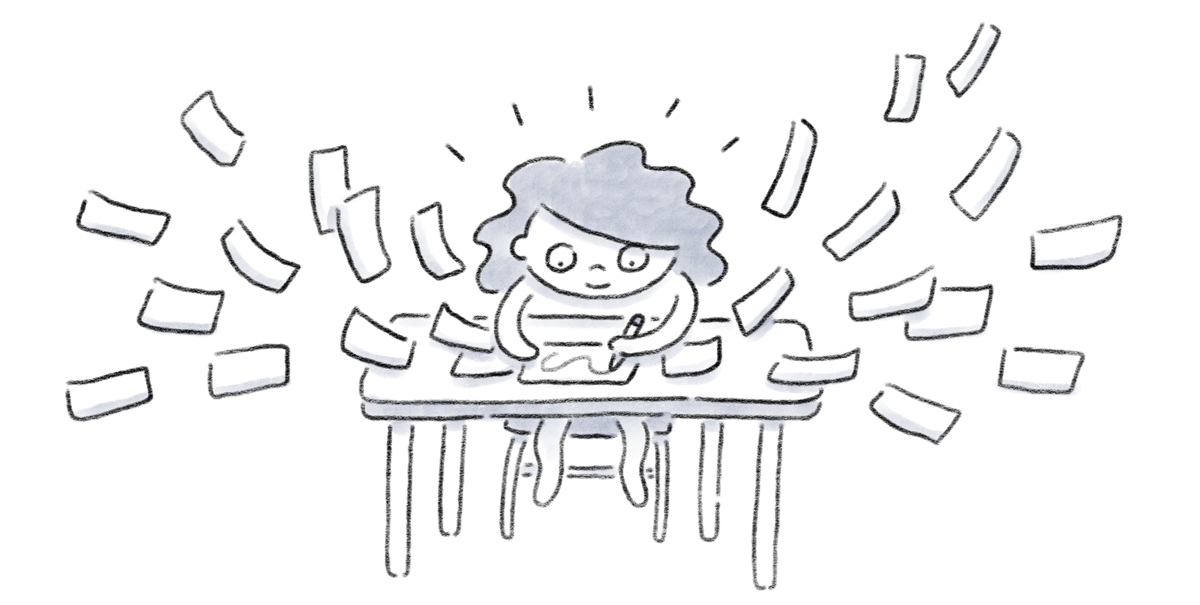
I’ve created a new resource weekly for the past two years now. But here’s another not-so-secret secret: I take breaks sometimes! Sometimes you need a break, even from the things you love. Occasionally, I’ll get to the point where the newsletters become a major stress point in my week, and my energy begins to wane or the quality begins to slip. This usually happens when stuff in my personal life is hectic or crazy, like around the holidays. I’ve gotten much better at realizing when this feeling is coming on so I can either nip it in the bud and rededicate myself, or take a break to rest my brain. I put a ton of energy and work into every essay, and sometimes I have to step back and recharge to be able to do that week in and week out.
For example! I’m actually on a break from my newsletter right now! My husband and I just moved out of our Atlanta apartment, and we’re about to move across the country with a 10-day road trip to Seattle! I think it’s important to take care of ourselves and give ourselves breaks when we need it. The world won’t go away while we’re gone.
Do you have any overall advice for seeing personal projects through to completion?
I’m a huge planner, and love to have an overall plan for bigger projects, like books. I keep the project open-ended at first, embracing the ambiguity and not throwing out any ideas while I’m in the brainstorm figure-out-what-this-is stage. But once I have a solid feel of where I’m heading, I’ll make a full project plan, complete with tasks and deadlines, using Asana. Having this plan keeps me focused, on schedule, and stops me from dilly-dallying so long that the book never gets done. I’m a huge proponent of the done-is-better-than-perfect philosophy.
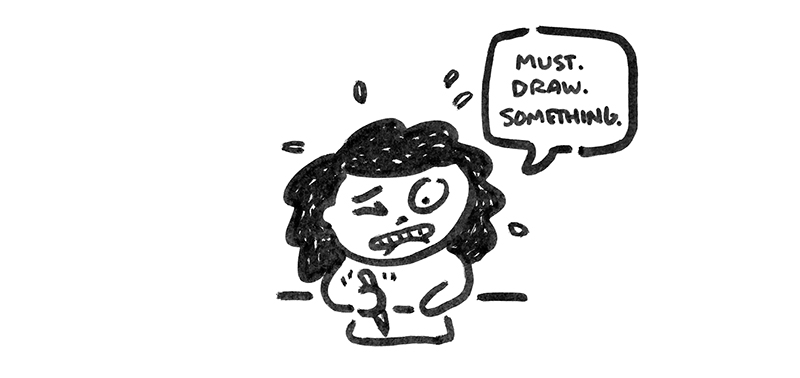
But there’s a caveat to this process: you have to be willing to change the plan along the way. Creativity is an odd and curvy road, and no creative project will look the same at the end as the beginning. Don’t be chained to your plan so closely you miss out of those happy mistakes or spontaneous revelations. Your plan is not set in stone and you should be flexible enough to embrace those unexpected changes.
What are your thoughts on artistic style?
Whoo-wee! I talk about artistic style a lot, and I have a lot of strong opinions about it. It’s funny, because I feel like in the art world—especially among people who have already found success—it’s taboo to talk about style. It’s sometimes seen as something superfluous, or something only an amateur would ask about or worry about. But that’s so misguided! I’m sure those successful artists went through the exact same process of self-doubt and self-discovery, they just maybe didn’t realize it at the time or don’t remember it now. Or I don’t know, maybe they were born baby geniuses, but I sure wasn’t. I think artistic style absolutely worth thinking about, reflecting on, and actively cultivating. Your artistic style is your voice, or your language, and it’s how you visually communicate your thoughts and ideas. How could that not be important?!
The most common advice handed out is: “Just don’t worry about your style”. But that’s like telling someone who’s sad, “Just don’t be sad.” What the sad person really needs to do is dig deeper, and figure out why they’re sad to be able to not be sad. And you—the artist—has to dig deeper, and figure out who you are and what you want to communicate, to be able to not worry about your style. And you do THAT by making lots and lots of art.
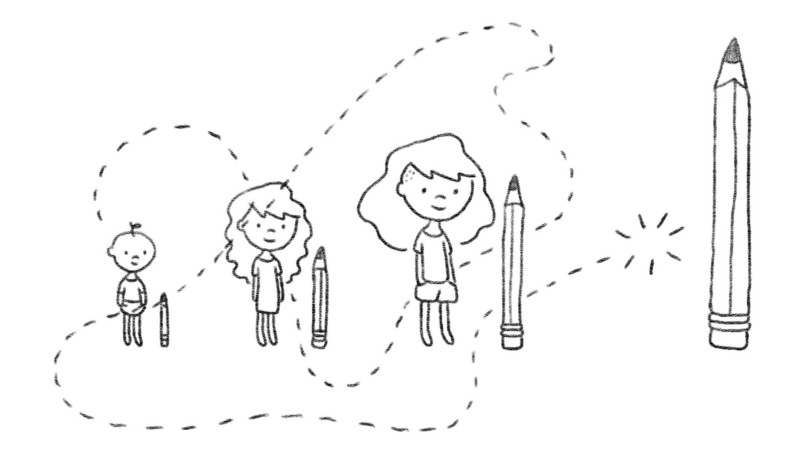
You can’t think you’re way to your style, you can only make your way there. But I still think it’s good to talk about, think about, and reflect on your style. You just have to do it with an open, patient, and curious mindset. You can’t expect to build your all-encompassing artistic style in one month. It’s a lifelong process, and you’ll never feel you’ve truly found it. It’s always changing, evolving, and growing, just as you as a person are changing, evolving and growing.
But that’s what makes artistic style so magnetic and mesmerizing to me. I don’t want to “not think about” my style or “not worry about” my style. I want to constantly be pursuing, growing, and challenging my style to build it up over my lifelong journey as an artist. That’s really what keeps me making art—wondering what my art will look like 2, 5, 10 years from now. And the only way to find out is to keep making art and keep reflecting back on it as I move forward.
How do you deal with creative block?
There’s that quote by the painter, Chuck Close: “Inspiration is for amateurs, the rest of us just show up and get the work.” On one hand, I agree with him. One of the most important things you can do is set up a consistent art practice—draw every day, find the time of day you’re most creative, have a dedicated space, etc. But man, sometimes creative block hits you hard, and you feel like you’re crumbling. You feel like you have zero ideas no matter how much you try to willpower your way through it. It happens to all of us. Well, it happens to me at least.
Generally the problem for me in situations like this is simple: I’m overthinking. It’s not that I have zero ideas, it’s that I think I have zero good ideas. There’s a distinction. A bad idea is still an idea. But when we’re in that zone of overthinking, nothing is good enough for us to draw. If I just sit there at my desk stewing over how I don’t have any ideas, or how bad my ideas are, I’ll just get frustrated and quit. Enough days like that, and that’s how people stop making art forever.
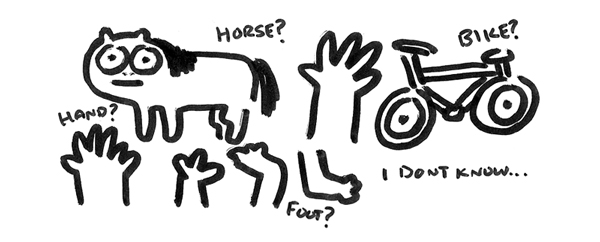
At times like this, instead of beating myself up, I try to get out of my head. I walk to get a nearby coffee shop. Read a book. Eat an apple in the sun. Take a hot bath. Go for a run with my dog. Whatever it is, I just try to take a step back from my art, my desk, and my mind. Almost every time, I come back with a lighter head, and at least one bad idea.
If we could all do just one thing to become better artists, what would it be?
Care less! I’m not saying don’t care at all. I care deeply about my art, and care deeply about improving and growing and making more art. But in general, I think we care too much. We care too much about getting a drawing right, that we don’t try at all. We care too much about how good our ideas are, so we throw them out. We care too much about what other people will think about our art, so we never share it with anyone. We care too much about money and success, so we don’t allow ourselves to pursue our most unique ideas. We care too much about not being as talented as whats-her-name, so we quit.
Christine will be launching her latest class Art Abroad: How to Create a Travel Journal next month. To know when it’s released, and follow all that Christine does, sign up for her newsletter. All of her essays can be found on the Might Could Studios website.
Hayden Aube
Happy Faces on Everything
Happy Faces on Everything began in 2016 when I realized I could make the journey for designers and illustrators easier. Rather than just add to the noise that's out there, I filter through it and distill only what's necessary. By focusing on quality over quantity, you can have confidence in knowing that every course, tutorial and resource you find on the site is attentively researched and heavily curated.